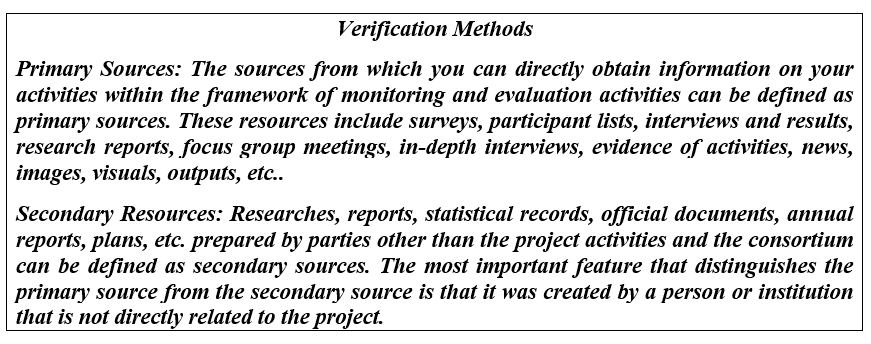Summary: Discusses the importance of developing a quality plan to ensure project deliverables meet predetermined standards. Covers the process of creating a comprehensive quality plan and implementing quality assurance and control measures throughout the project lifecycle.
Learning Objectives:
- Understand the significance of a quality plan in ensuring project deliverables meet predetermined standards.
- Learn how to develop a comprehensive quality plan outlining quality standards, processes, and responsibilities.
- Gain proficiency in implementing quality assurance and control measures to maintain project quality throughout the project lifecycle.
Quality studies play an important role in determining the extent to which the objectives and outputs of the project have been achieved and in intervening when necessary. Quality requires examining goals and outputs not only quantitatively but also qualitatively. Quality studies in your project are carried out by regular monitoring and evaluation of Key Performance Indicators (KPI). Monitoring and evaluation of management processes as well as objectives and outputs are also included in the quality issue. As a matter of fact, a good management process is required for the project to reach its goals and outputs at the desired level. Problems experienced in management processes will directly affect the quality of the target and output. In addition, the image of a poorly managed project that achieves the desired goals and outputs and the institutions involved in the project may also be adversely affected. For this reason, while preparing and implementing your project, you need to consider both objectives and outputs and management processes. It is also important to include items related to management processes when determining your KPIs. In order to minimize management risks, you need to define a Risk/issue/change/crisis Management methodology and strategy at the proposal stage.
As quality management is directly related to monitoring and evaluation processes, it can be specified in this part of the proposal form. You also need to define how the quality management processes will operate. You can divide your quality management process into quality assurance and quality control.
The quality assurance technique and process are the set quality objectives and the preventive steps taken to eliminate any differences in the quality of the output produced. In this process, the frequency and quality of the steps followed in the coordination and cooperation of the output, service or activity to be produced are evaluated. Meeting minutes, correspondence, decisions taken, practices made, internal correspondence, survey results to be applied to project employees can be used within the framework of quality assurance mechanism.
Quality control technique and process can be defined as the quality objectives set and the remedial steps taken to eliminate any difference in the quality of the output produced. If there is a deviation from the targets, related problems are identified and necessary measures are taken and improvements are made. Surveys for beneficiaries, feedback, visuals, images, notes, invoice / waybill information, peer / expert evaluations, work package / output review meetings can be used within the scope of quality control mechanism.
In the evaluations to be made, a commission within the consortium will be appointed, or an external evaluator may be hired. If the grant program allows, you can justify the external evaluation service in this context. It is important that you specify how often, by whom, and for what purpose your quality studies will be carried out, in the relevant sections of the project proposal form. At this stage, you can specify the qualifications and profile of the person or people who will carry out the quality studies. When presenting the profile of these people, you do not need to give their names unless otherwise requested. It is recommended that you pay attention to proportionality in the budget you will allocate for quality studies. In this context, quality work should not constitute a large part of the project budget. If you are developing a production-related project where quality is very important, you can justify this situation, but this budget will naturally be more limited in projects where the physical product is scarce and for services and activities.





